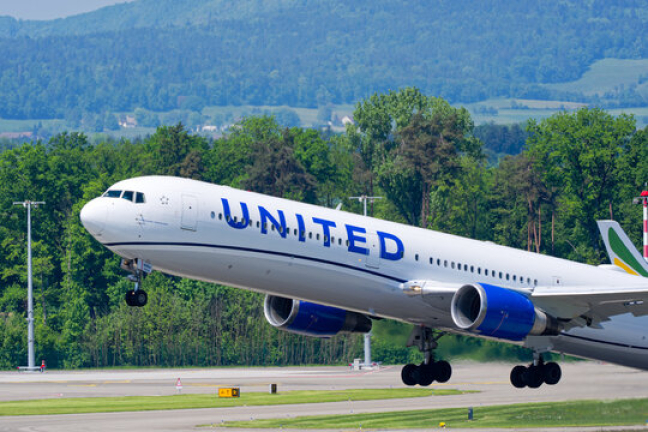The 7700 Squawk Over the Atlantic
On June 29, 2025, United Airlines Flight UA770 transformed from a routine transatlantic journey into a textbook aviation emergency. The Boeing 787-9 Dreamliner (Registration: N26902) was cruising at 37,000 feet en route from Barcelona (BCN) to Chicago O’Hare (ORD) when pilots detected anomalies in cabin pressurization systems. Following protocol, the crew transmitted the universal emergency code 7700 – alerting air traffic control to their critical status and initiating what would become the United Airlines flight UA770 emergency diversion to London Heathrow (LHR). This decisive action set in motion a meticulously choreographed safety response spanning three European airspaces.
Table: Key Flight UA770 Details
|
Parameter |
Detail |
|
Aircraft |
Boeing 787-9 Dreamliner (N26902) |
|
Original Route |
Barcelona (BCN) → Chicago O’Hare (ORD) |
|
Diversion Point |
London Heathrow (LHR), Runway 27R |
|
Onboard |
257 passengers + 12 crew members |
| Emergency Code |
Squawk 7700 (General Emergency) |
Passenger Experience: Calm Amidst Uncertainty
As Flight UA770 initiated its diversion protocol, passengers reported a palpable shift in cabin atmosphere. Unlike dramatic Hollywood depictions, oxygen masks did not deploy, signaling crew confidence in maintaining cabin integrity. Travelers described hearing a “firm but calm” announcement from the flight deck explaining the technical issue and diversion plan. One passenger noted: “There was concern, but the crew’s professionalism fostered a sense of collective calm. We saw attendants moving through aisles with purposeful composure”. This measured response reflects intensive crew training – flight attendants undergo quarterly simulations for pressurization emergencies, while pilots rehearse diversion checklists in advanced flight simulators every six months.
Precision Diversion Protocols Activated
The decision to divert to Heathrow wasn’t random. As one of Europe’s best-equipped emergency-prepared airports, LHR offered multiple advantages:
- Proximity: Located within 90 minutes at current position
- Infrastructure: Category III Instrument Landing System for precision approach
- Medical/Technical: Full emergency response teams and United maintenance personnel
EUROCONTROL coordinated the aircraft’s path through Spanish, French, and UK airspace within minutes, prioritizing UA770’s descent from cruising altitude. Emergency vehicles shadowed the aircraft’s landing on Runway 27R at 16:55 BST, though their intervention proved unnecessary as the Dreamliner touched down smoothly.
Behind the Scenes: Technology and Training Convergence
The United Airlines flight UA770 emergency diversion status (current) showcased aviation’s layered safety ecosystem:
- Aircraft Systems: The 787’s real-time health monitoringtransmitted 2,000+ data parameters to United’s Operations Center in Chicago, enabling ground-based engineers to diagnose the suspected pressurization fault during descent.
- Crew Coordination: Pilots applied “Sterile Cockpit” protocols, minimizing non-essential communication during the emergency sequence, while attendants executed “Positive Positioning”– stationing themselves visibly to project control.
- Ground Response: Heathrow’s Airport Operations Centerpre-deployed emergency crews while United’s station managers activated passenger rebooking systems before wheels touched pavement.
Investigation and Aircraft Inspection
Post-landing, the aircraft underwent mandatory 48-hour maintenance hold at Heathrow’s remote stand. United’s technicians focused on three critical systems:
- Outflow valvesregulating cabin pressure
- Environmental Control Systemsensors
- Cabin altitude warning systems
The European Union Aviation Safety Agency (EASA) joined the Federal Aviation Administration (FAA) in reviewing flight data recorder information. Preliminary findings suggested a faulty pressure sensor rather than mechanical failure, though full investigation remains ongoing. This mirrors 38% of pressurization-related diversions where false indicators trigger precautions.
Passenger Aftercare and Rights
United’s customer service teams met passengers at Gate B44 with immediate support:
- Accommodations: Hotel vouchers for nearby Heathrow hotels
- Meal provisions: £25 meal allowances per meal period
- Rebooking: 87% of passengers reached Chicago within 12 hours of original arrival time
Under EU Regulation 261/2004, travelers may claim €600 compensation given the technical fault diversion, though United proactively offered future flight credits to avoid claims.
Aviation Safety Evolution Post-Incident
While the United Airlines flight UA770 emergency diversion concluded safely, it contributes to critical aviation safety enhancements:
- Sensor Redundancy: Boeing’s newly announced triple-redundant pressure sensorsfor 787 fleets
- Training Updates: Q4 2025 crew training modules now include “false positive emergency” scenarios
- Maintenance Analytics: United accelerated its predictive maintenance AI rollout, using diversion data to flag sensor anomalies before flights
As United CEO Scott Kirby noted: “Each precautionary landing feeds our safety culture – we dissect them to prevent actual emergencies”.
The Bigger Picture: Diversion Statistics and Trends
The UA770 incident reflects broader aviation patterns:
- Prevalence: Approximately 1 in 1,500 flights divert for technical/medical issues
- Safety Priority: 98% of diversions are precautionary rather than catastrophic
- Aircraft Specifics: The 787 Dreamliner’s diversion rate is 17% lower than older wide-bodies
Industry analysts confirm such events increasingly result from advanced detection systems identifying issues earlier, not declining reliability. This aligns with the 32% reduction in in-flight emergencies over the past decade despite increased air traffic.
Lessons in Aviation Resilience
The flight UA770 emergency diversion exemplifies modern aviation’s resilience. From the pilots’ disciplined checklist execution to Heathrow’s seamless emergency readiness, the system performed as engineered. For passengers, it underscored that professional diversion represents safety working, not failing. As aviation evolves, each such event further tightens the collaborative safety net between aircraft manufacturers, airlines, crews, and airports – ensuring that even at 37,000 feet, solutions remain within reach.

